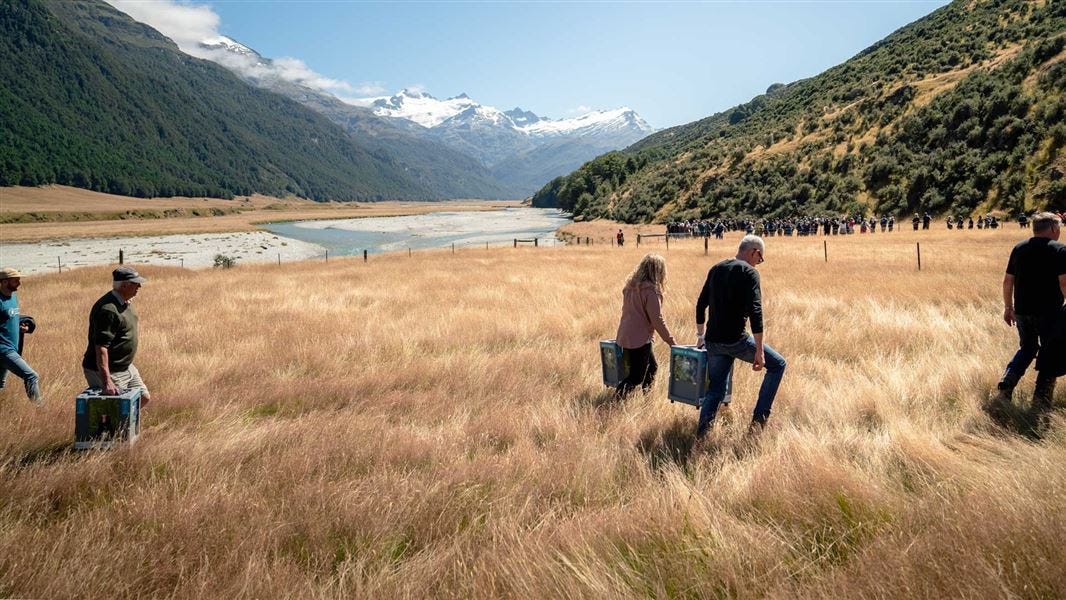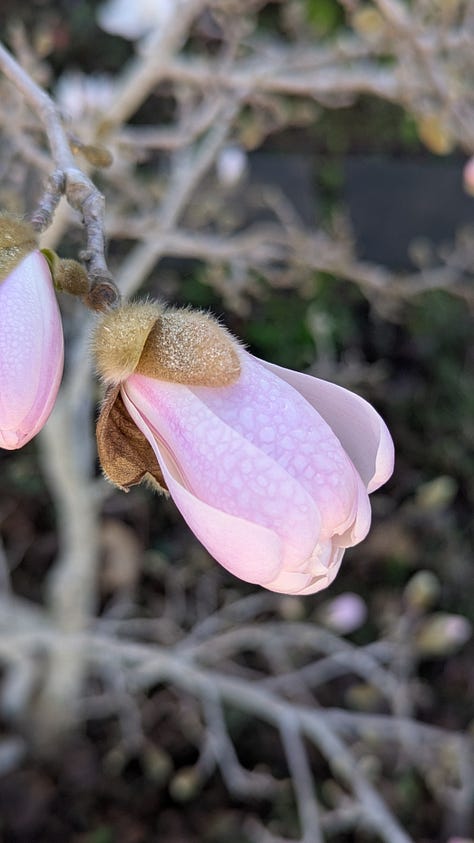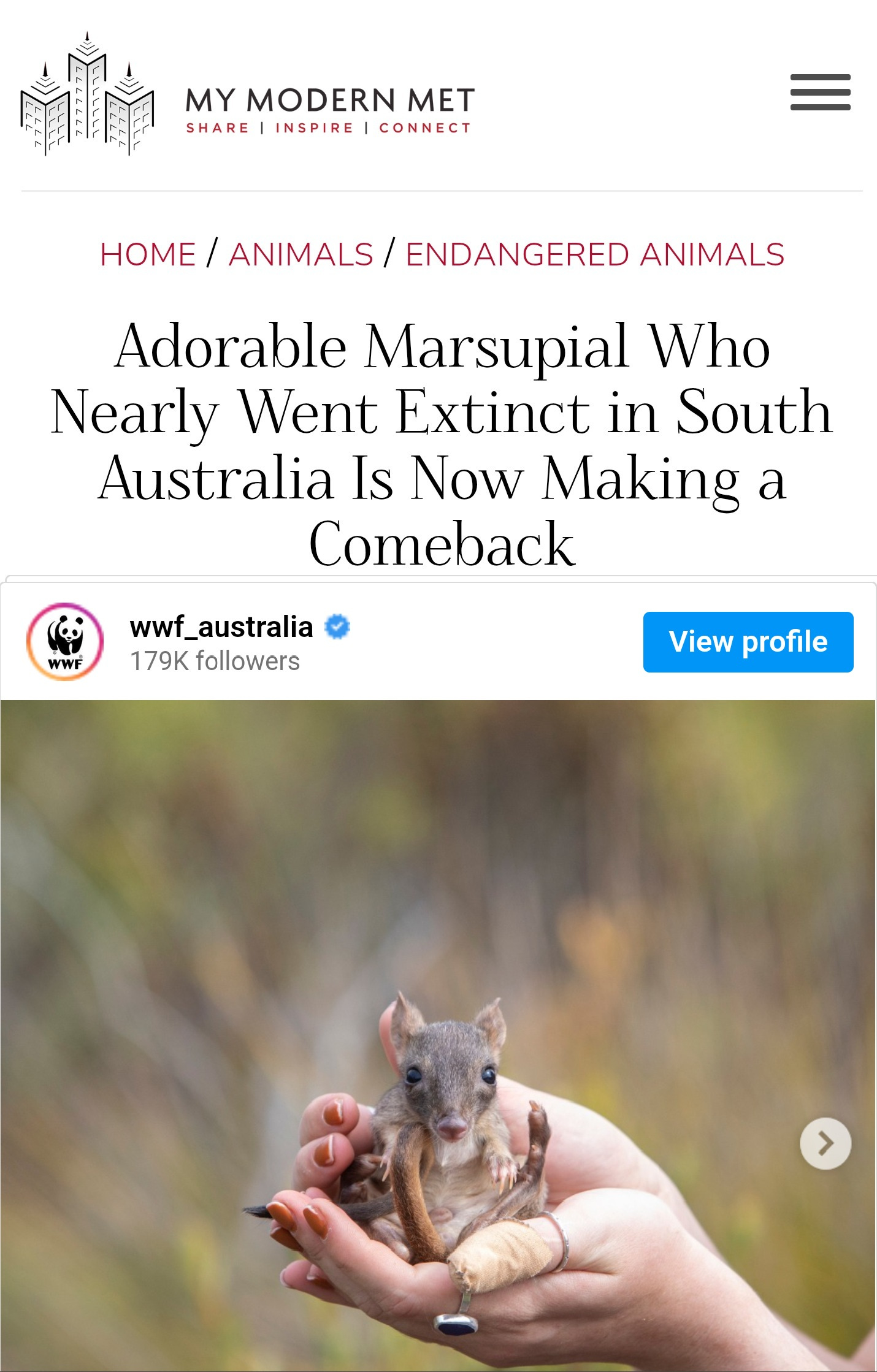Life is carbon capture: Restoring pufflings, otters, terns, condors, forests and more
Torrential hope during uncertain times: A global conservation news roundup
Nature has already invented the most powerful mechanism for capturing carbon. It’s called life.
Restoring ecosystems such as forests, wetlands, grasslands, rivers, and oceans — and allowing wildlife to thrive — are great for abating climate change. Conservation is carbon sequestration
For instance, when whales die and fall to the ocean floor, they don’t decompose for hundreds, possibly thousands, of years in that cold environment. Scientist Crispin T.S. Little, writing in Scientific America, once estimated there might be 700,000 whale carcasses storing carbon at the bottom of the ocean right now, a literal “carbon sink.” Prior to whaling, that number may have been six times greater.
Scientists with the U.S. government’s National Oceanic and Atmospheric Administration know that whales help mitigate climate change by “pumping” carbon from the surface of the ocean down to its depths, and vice versa. Check out the story before the Muskrats take it down1: Whales and Carbon Sequestration: Can Whales Store Carbon?
I’ve reported on the worldwide rebound of whales from their lows 100 years ago. Some species that dipped to a few hundred animals now number in the tens of thousands. A bright spot of ocean news this week: A female orca calf born in Puget Sound is doing well, according to several news reports. A female is positive news for the reproductive future of this critically endangered orca group that swims the Salish Sea and feasts on salmon.
Humanity cooperated to save whales and other marine mammals. We must do it again for our other pressing problems.
Now, let’s dive into this week’s torrent of hopeful news!
Hopeful Headlines

Icelandic volunteers return lost pufflings to home cliffs
Light pollution is luring adolescent puffins to a town on a remote Icelandic island, far from their nesting cliffs. (Who knew young puffins are called pufflings?) But not all hope is lost for these wanderers. A volunteer brigade collects the birds in cardboard boxes and delivers them back home:
On any given night during puffling season, a dozen or more small groups and individuals may be patrolling the town. Rescuing stranded birds is a long-standing tradition on the island, though the catchy Puffling Patrol name has been around for only a decade or so. Typically teens or younger kids scour the night alongside parents or grandparents who pass down the tradition. (For the little ones, it’s a great excuse to stay up late.)
Read more from ScienceNews: How a puffin patrol in Iceland is saving the iconic seabirds
South Australia: Small marsupial makes a comeback
An animal’s adorability should not determine whether we celebrate its rebound. My Modern Met not only proclaims that the brush-tailed bettong is “adorable” in its headline, but says it is “cute” and “lovable” in its leading paragraph. We’ll forgive this coddling and look for the science:
[Brush-tailed bettongs] are sometimes referred to as “nature’s engineers” because of their eating habits. Their primary diet of underground fungi requires the marsupials to dig through large quantities of earth, which aerates the soil and, in effect, increases water filtration and seed germination.
Thank you very much for this insight, My Modern Met.
Hampshire, U.K: River otters spotted for the first time in 70 years
The Independent reports that a river otter mom and pup have been spotted in Ewhurst Park, a former shooting estate that is now a 925-acre nature preserve.
They are the latest sign of nature recovering at the estate, the team said, with 90 different bird species, including threatened species, in 2024, as well as an array of small mammals, amphibians, butterflies and reptiles.
Beavers have also been introduced into an enclosure in the park, producing kits last year in what was the first time the species had bred in Hampshire in 400 years.
This news makes me ecstatic, specifically the potential connection between the beavers and otters. Beavers are known to recharge groundwater, reduce flooding, and restore wetlands. Their ponds allow life, from insects to birds to fish, to explode. The beavers’ activities likely provided the habitat and food that attracted the river otters.

New Zealand: More takahē released to wild
Children stopped classes to watch the New Zealand Department of Conservation release two more of its endemic flightless birds into the wild following the survival of 18 birds released in 2023.
Today, there are more than 500 takahē and their population is growing five percent a year. More than half the birds live at wild sites. Once thought extinct, takahē were rediscovered in the Murchison Mountains in 1948.

Glen Greaves, a senior ranger, says existing wild sites are reaching capacity, so they are scoping out new areas. Feral cats are the birds’ main predators.
“Finding wild sites with the right habitat, and with predator numbers low enough for takahē to thrive is a challenge — but the Greenstone, Rees, and wider Whakatipu areas likely provide high-quality habitat for takahē,” Greaves said.

South America: Communities boost high-altitude forests across five countries
Mongabay reports that a grassroots effort is helping to restore the Andean forests of Peru, Chile, Bolivia, Argentina and Ecuador, with Colombia and Venezuela up next. In one day alone, volunteers planted up to 100,000 specialized high-altitude shrubs and trees — collectively known as queuñas.
Since 2018, Acción Andina has launched 23 projects, engaging at least 25,000 people in the restoration of nearly 5,000 hectares (12,400 acres) of Andean forests and the protection of more than 11,250 hectares (27,800 acres) of existing woodland. More than 200 local communities have benefited from expanded economic opportunities through reforestation and conservation efforts. These include the development of community microenterprises, such as tree nurseries dedicated to cultivating queuñas, as well as improved access to health care services, water collection systems, cleaner-burning clay stoves, and solar panels.
Northern Mexico: The biologists who help condors soar
Condors are on the rebound in Mexico. Knowable Magazine reports on the efforts to conserve California condors in Baja, where the birds disappeared by 1930, fifty years before their near extinction in the United States. Captive-bred condors were released in Mexico in 2002, a result of collaboration among zoos and conservation organizations across the two nations.
Their return has been captained for more than 20 years by biologist Juan Vargas Velasco and his partner María Catalina Porras Peña, a couple who long ago moved away from the comforts of the city to endure extreme winters living in a tent or small trailer, to manage the lives of the 48 condors known to fly over Mexican territory.
Earth Hope has covered condor recovery in these two stories:
Five more condors fly over Northern California, thanks to a persistent tribe
A young condor survives lead poisoning
The New York Times: Helen Hays, who protected terns at Long Island Sound, dies at 94
Hays spent six months a year for 51 years protecting terns at Great Gull Island.
They would work sunup to sundown, every day, sometimes braving the birds to collect samples or tag newborns, other times crouching for hours in one of the island’s 31 blinds, wooden structures designed to let them observe the birds up close.
The colony has rebounded from 3,500 birds to 40,000 in one century. Hunters once targeted them for plumage used in hat making.

Kenya: Restoring grasslands as a nature-based solution to climate change also reduces human-wildlife conflicts
A study published in Frontiers showed that as grasslands dried up due to climate change, human conflicts with wildlife such as elephants, giraffes and hyenas increased. However, once grasslands were restored, communities had access to more water and grazing, and conflict with wild animals also decreased.
Don’t forget: Renewables are an unstoppable global trend
In addition to conservation, we’ve also got to keep cutting emissions. The great news: Developing countries are deploying solar and geothermal energy at unprecedented rates.
reported this week that China sold 235.93 gigawatts of solar modules in 2024, which were sent worldwide, including Europe, India, Pakistan, Africa and the Asia-Pacific region. This represents a 13 percent increase over the previous year. In addition, I’ve discovered a solutions-based newsletter called “Net Zero Notes,” written by , who reported this week that Kenya is not only building out its own geothermal, it’s helping other African countries do the same.Yes!
Nature opinion piece declares hope should be a climate communication strategy
Nature: How scientists can drive climate action: celebrate nature and promote hope
Harini Nagendra writes:
Climate change, biodiversity collapse and pollution are classic ‘dismal disciplines’, which can plunge young people — the main target of our communication efforts — into depression. I have seen my own students struggle to seek hope when confronted with the realities of climate change. Public communication must move beyond stories of doom and gloom, which — although realistic — have the unfortunate effect of making many people step away, instead of engaging in the conversation.
Thank you, Harini, I wholeheartedly agree!
Readers, what successes and solutions are bringing you hope? What drives you to take action? Join the conversation below. Thanks for your support. 🙏
Read more about Earth Hope and what inspired it. Visit earthhope.substack.com for more stories. Visit my Services page if you’re a writer who’d like some help figuring out Substack, with free editing for paid subscribers.



Any mention of climate change has been banned from all U.S. government websites. Mass layoffs began yesterday at NOAA. I’ve saved and replubished the whale story here in case it does get taken down.






Your stories always provide hope 😊
Thank you Madam Royal for bringing up these attempts to erase history.
Might I point out, that eliminating every mention of the words “climate change” is the kind of outright lunacy never before seen outside of Beijing?
We are talking about decades of work by tens of thousands of scientists. I didn’t plan to star in a 21st Century version of Idiocracy, but here we are.
Luckily, there hasn’t been any indication that rapid climate and weather change are real. Nothing at all, really, save a wildfire here and there, a little flooding, a few more hot days than usual, a couple of nation-sized icebergs breaking off Antarctica and melting … hell, nothing to see here!